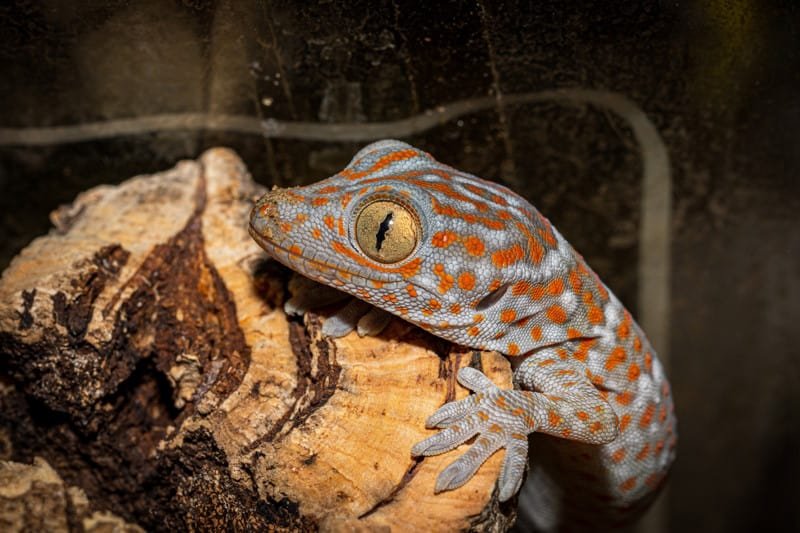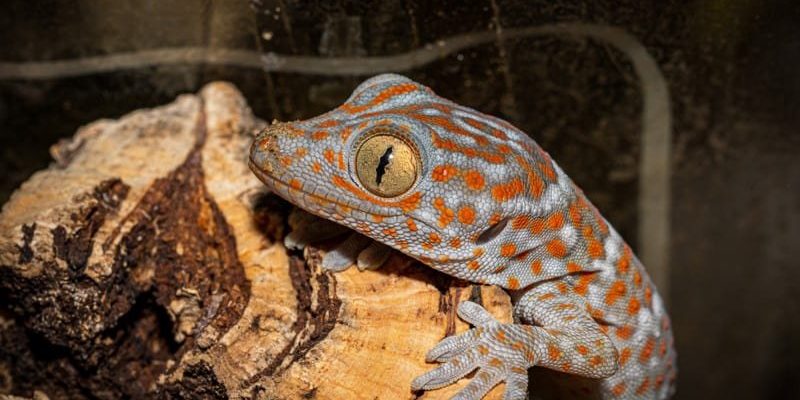
When you think about reptiles, you might picture them slithering around without much social interaction. But here’s the thing: Tokay geckos are quite the opposite. They are vocal and territorial, communicating through raucous calls, especially during the breeding season. Understanding their breeding behavior is like unlocking a secret door to their lives, revealing how they find mates and raise their young. Let’s dive into the intriguing world of Tokay geckos and explore their reproductive habits.
The Mating Rituals of Tokay Geckos
The mating process for Tokay geckos is anything but mundane. It all starts with a series of loud calls, which sound like a “tokay” or “gok-gok.” These calls serve a dual purpose: attracting potential mates and warding off rivals. Picture a gecko climbing to a high perch, calling out into the night. It’s like a singer on stage, hoping their performance will catch the attention of the right audience.
Once a female hears these calls, she may respond if she’s interested. Courtship involves a fascinating display of behaviors. Males often engage in head-bobbing and tail-waving, showing off their strength and fitness. This ritual helps females choose a strong partner capable of defending territory and caring for offspring. It’s a natural filtering process, ensuring that the fittest genes are passed on to the next generation.
After the courtship phase, if a female is receptive, the actual mating occurs. This can last several hours, and once it’s done, the female will be ready to lay her eggs. The entire process is a captivating dance of attraction, selection, and reproduction, showcasing the Tokay gecko’s unique behaviors.
Nesting Habits of Tokay Geckos
Once mating is successful, the females prepare to nest. Unlike some reptiles that dig holes or lay eggs in the sand, Tokay geckos take a different approach. They often choose secluded and safe locations, such as in tree hollows or under loose bark, to lay their eggs. Imagine finding a cozy nook in a tree, far away from potential predators—that’s the ideal spot for these geckos.
A female Tokay gecko typically lays two eggs at a time. These eggs are hard-shelled, which helps protect them from environmental threats. After laying, a female may stay nearby to defend her nest, making sure no curious animals disturb her precious eggs. It’s a maternal instinct at work, ensuring that her offspring have the best chance for survival.
One interesting aspect of Tokay gecko reproduction is that they can lay eggs multiple times a year. Depending on environmental conditions and food availability, a female might produce several clutches within a single season. This flexibility in breeding helps ensure that their population can thrive in various conditions.
The Life Cycle of Tokay Gecko Hatchlings
After about 60 to 90 days of incubation, the eggs hatch, revealing tiny Tokay gecko hatchlings. These babies are miniature versions of their parents, complete with the same bold colors and patterns. Once they emerge, they must be quick to find shelter and food because nature doesn’t wait.
Hatchlings are independent right from the start. Unlike some species that remain with their parents for a time, Tokay gecko babies must fend for themselves. These little geckos are agile climbers, quickly scaling surfaces to find insects, which makes up their primary diet. It’s almost like watching a young child learn to walk—there’s a clumsiness at first, but soon they’re darting around with confidence.
Survival rates for hatchlings can vary, depending on environmental conditions and availability of food. Sadly, many won’t make it to adulthood, but those that do will continue the cycle of life, calling out for mates and laying their own eggs in the future.
Parental Care and Protection
While Tokay geckos are known for being solitary creatures, the female does exhibit some level of parental care. After laying eggs, she often stays close, guarding the nest from potential predators. This protective behavior is crucial for the survival of her offspring.
However, as soon as the eggs hatch, that parental role diminishes, and the hatchlings are left to their own devices. It might seem harsh, but it’s a strategy that works in the wild. By not staying with their young, female Tokay geckos can conserve energy and focus on finding food for themselves, ensuring their survival.
It’s interesting to note that this lack of ongoing parental care is not unique to Tokay geckos alone; many reptiles adopt similar strategies. The goal is to maximize the chances of survival for both the parent and the offspring, allowing them to thrive in their natural habitats.
Communication During Breeding
Communication is key in the breeding habits of Tokay geckos. As mentioned earlier, their vocalizations play a significant role in attracting mates and establishing territories. Males are particularly vocal during the mating season, using calls that can be heard from quite a distance.
These calls are not just sounds; they carry meaning. The pitch, frequency, and duration provide information about the caller’s fitness and readiness to mate. Think of it like a dating app profile—geckos are showcasing their best qualities to potential partners.
In addition to vocalizations, Tokay geckos also communicate through body language. Males will puff themselves up, display their colors, and perform specific movements to entice a female. This combination of vocal and visual signals creates a rich communication environment that’s crucial for successful mating.
Environmental Factors Influencing Reproductive Behavior
The reproductive behavior of Tokay geckos is closely tied to environmental conditions. Factors like temperature, humidity, and availability of food can significantly influence when and how they mate. For example, during the rainy season, when food is abundant, these geckos may be more likely to breed.
Temperature also plays a role in egg incubation. Eggs laid in warmer conditions may hatch sooner, while cooler temperatures can extend the incubation period. This adaptability is vital for ensuring that hatchlings emerge when food is plentiful.
Understanding these environmental influences helps researchers and enthusiasts alike appreciate the complexity of Tokay gecko reproduction. It’s not just about instinct; it’s also about responding to the world around them, ensuring their survival and that of their young.
Breeding and reproductive behavior in Tokay geckos is a captivating subject that reveals much about these remarkable reptiles. From their elaborate mating rituals and nesting habits to the independence of their hatchlings, Tokay geckos showcase a fascinating blend of instinct and adaptability.
As we’ve explored, their communication methods, environmental factors, and parental care strategies all play crucial roles in their reproductive success. By understanding these behaviors, we not only gain insight into the Tokay gecko but also admire the complexity of nature itself.
So, the next time you hear that loud “tokay,” remember there’s more going on than just a catchy sound. There’s a whole world of breeding habits, protective instincts, and survival strategies at play, all contributing to the ongoing story of these incredible creatures.

